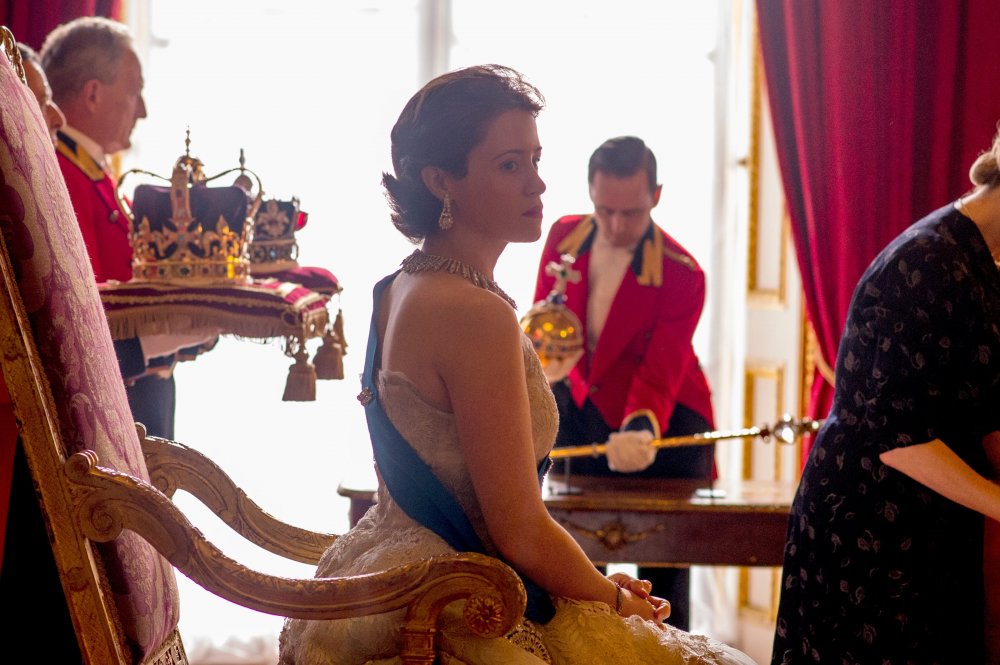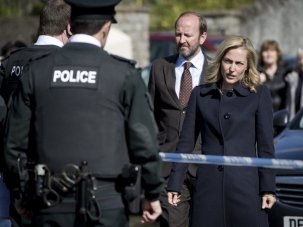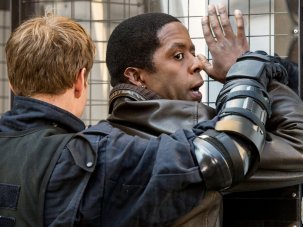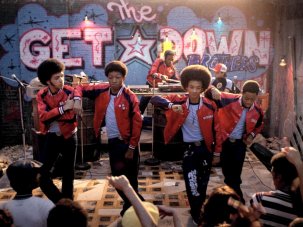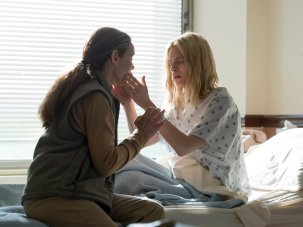Great storytellers really can mess with your mind. There’s a scene early in The Crown, writer Peter Morgan’s new series for Netflix, where I’m startled – shocked indeed – to find myself shedding tears over, of all things, the British royal family.
The first series of The Crown is available to view now on Netflix.
The BFI & Radio Times Television Festival runs 7-9 April 2017, and features a panel discussion with The Crown’s lead director Philip Martin, executive producer Suzanne Mackie and actor Claire Foye on 8 April.
Every fibre of my ideological being is telling me these feudal relics should have been dispatched years ago, though possibly more humanely than the Romanov against-the-wall method. Still, I’m genuinely touched by the sight of the Windsors of yore singing carols in the parlour, stoic and resilient while everyone in the room knows that the ailing King George VI won’t see another Christmas. All that privilege can’t cure the cancer eating away at a fragile soul who wasn’t suited for the monarchical role, even though brother Edward’s abdication left him with no choice in the matter. And in the midst of the forced seasonal cheer, George’s somewhat plain and unexceptional eldest daughter Elizabeth knows that she’s next in line – and has absolutely no choice either.
And so the story unfolds, over ten one-hour episodes (though mini-movies might be a more accurate description), gradually drawing us into the unique circumstances of a family whose lives are not their own. Tradition and duty take precedent over individual choice, and for all the bowing and scraping, the palatial living quarters, the jewels and ermine, what’s at stake in this first season of The Crown is unyielding pressure upon the inexperienced young Elizabeth to maintain the crown’s mystique in a Britain transformed by the social upheavals of World War II and now emerging into a modernity with much less room for the deference of previous eras.
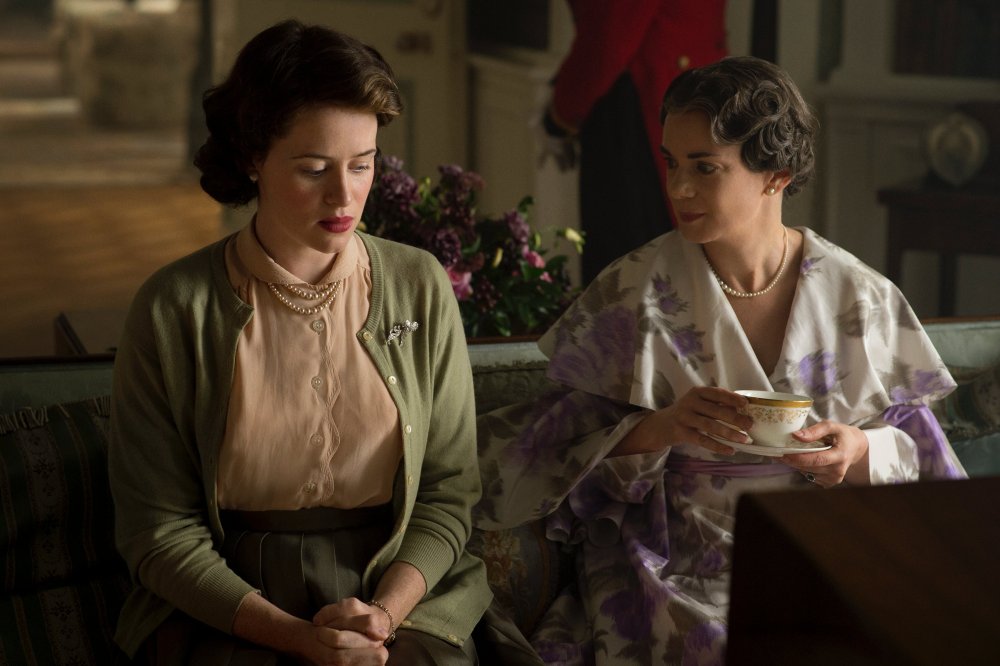
Foy with Victoria Hamilton as her mother
Facing the young queen in weekly prime ministerial meetings is Winston Churchill, the nation’s great saviour, now old and infirm but hanging on to the post by sheer determination and ego – can she really bring influence to bear to see the great man out of office? Where too does she stand with her sister Margaret, who’s fallen for a divorcee? The constitutional carnage after uncle Edward followed his heart with Wallis Simpson rather than accept the strictures of his inheritance still remains very present, like smoke that hasn’t cleared after an explosion.
After his script for Stephen Frears’s post-Diana drama The Queen (2006), and his play The Audience (2013), which offers an overview on the continuity of the monarch as prime ministers come and go, all this is a subject area with which Morgan by now has some familiarity. But his fascination, it seems, is that of a slightly bemused dramatist rather than some regal hagiographer.
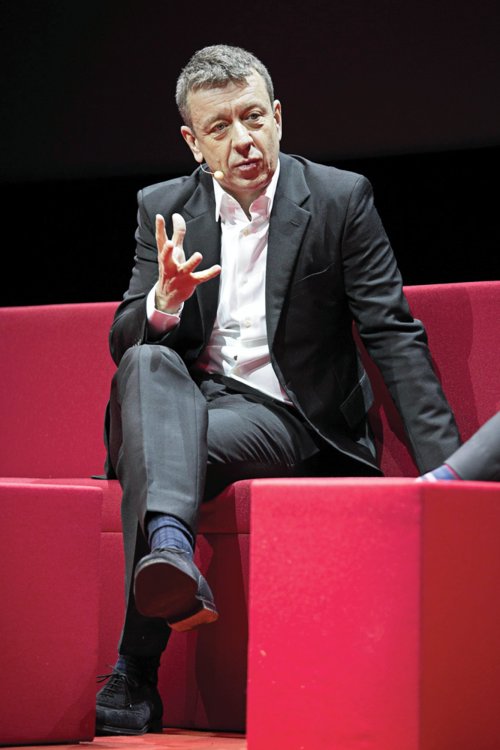
Peter Morgan
“I could not care less about the royal family; it’s absolutely scandalous that they should still exist in an egalitarian society,” he says, taking a few moments out of the whirlwind that is The Crown’s worldwide press launch in Los Angeles. “But at the same time the sheer illogicality and stark-staring madness of having a royal family is something worth exploring. It becomes fascinating the deeper you go, and I try to be impartial, judging them all with a bit of compassion. We the people don’t know what we want from them, whether they’re our gods or our slaves, and so they’re trapped in a kind of hellish predicament.”
Discerning the full contours of that predicament becomes apparent in the course of The Crown’s first season, which leads us from George VI’s final days through Elizabeth’s accession in 1952, and then through the constitutionally turbulent early years of her reign to the cusp of the 1956 Suez Crisis. Throughout it’s evident that Morgan has really found his métier with the immersive scope and Wagnerian pulse of longform television.
With the box-set binge already established as a significant part of our viewing habits, and Netflix not the only streaming content provider in the marketplace (Amazon has also invested heavily), this is hardly news in itself. However, Netflix’s reported £100 million investment in the first season alone – with shooting already under way on the second season before the first one is ready to air – is certainly a significant vote of confidence in the British film industry, given the established roster of production and acting talent The Crown draws on. Essentially, Netflix is banking on the quality and prestige exuded by this particular project to entice new subscribers to sign up to the service, clearly speaking to a different demographic than the provider’s expensive, much-hyped Baz Luhrmann urban music saga The Get Down.
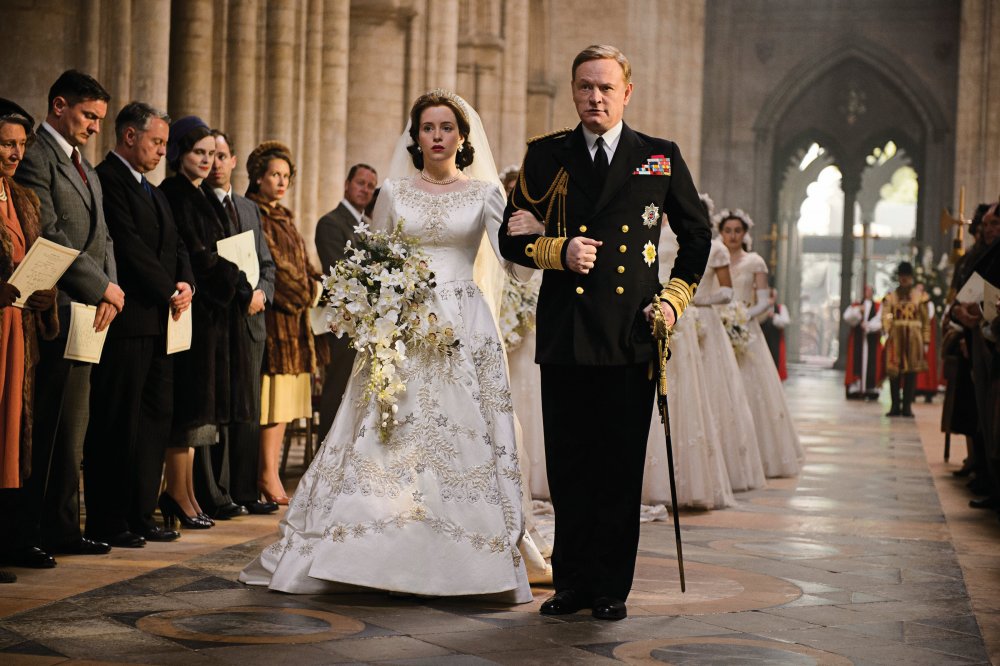
Foy with Jared Harris as George VI
Whether audiences internationally are quite ready for Morgan’s near-forensic investigation of the peculiar curlicues of Britain’s constitutional arrangements and their ongoing emotional consequences on the Windsor family, only time will tell, but there’s scant evidence of what’s on screen being pitched to a broader common denominator.
“From the very first meeting, Netflix was determined that this would be on air all over the world on the same day, and if you’re a storyteller that’s a very enticing proposition,” explains Morgan, who’s listed as the show’s ‘creator’ and has penned the first two seasons in their entirety. “If this was just a normal TV series, I wouldn’t have done it, but this is a new model, even if the paradigm is really in its early days. In ten years’ time, we’ll be having series which will open with the bombshell impact of our current movie franchises – the Bournes, Star Wars, Bond, etc – but combine that with the greater complexity of longform television. Something that’s global in its appeal, but with that bit more depth. It’s in its infancy now, but we’re beginning a whole new era.”
That sense of cinematic/small screen hybridity which Morgan describes is apparent from the off in The Crown. The first two episodes, directed by Stephen Daldry, and shot like all the rest in cinematic widescreen, certainly deliver more than enough production values to fill the frame – not least in the way the visuals bring out the surreal weirdness of a life spent facing crowds of people vigorously waving at you for no apparent reason. Messrs Julian Jarrold, Philip Martin and Benjamin Caron complete the directorial roster, though by the time they take over, Daldry’s work has set out the series’ stall, the deliberate pacing effectively giving room for the performances to breathe. Like Elizabeth herself, Claire Foy makes more impact as the series runs on, and John Lithgow’s Churchill beds in once we’re over the initial distraction of the physical transformation he’s undertaken for the role. Jared Harris, meanwhile, offers a heart-tugging performance as George VI.
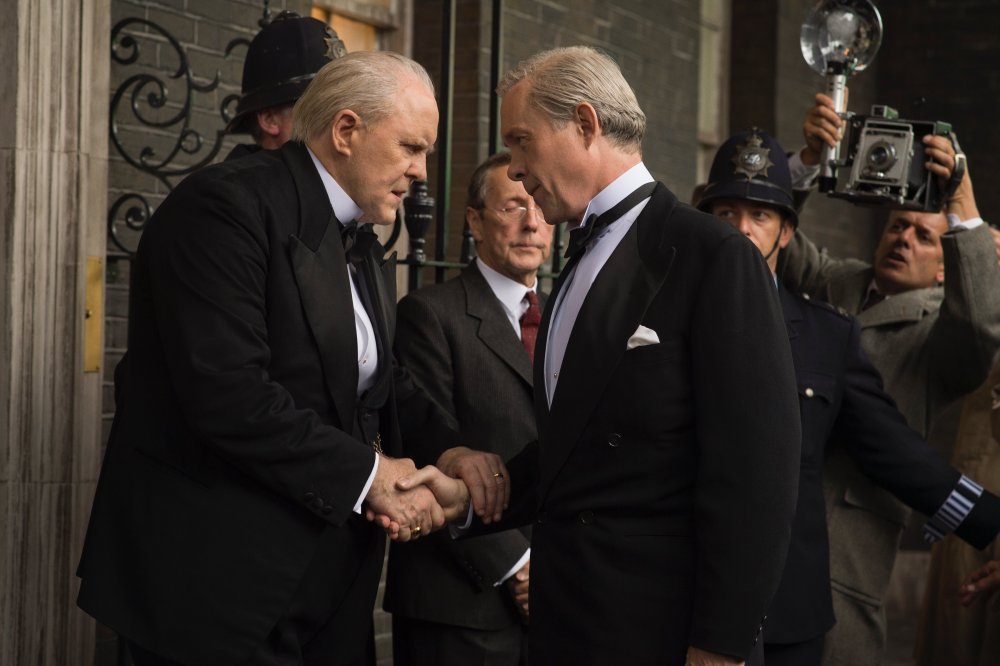
John Lithgow as Winston Churchill with Alex Jennings as Edward, Duke of Windsor
This is, though, very much a writer’s medium, and all concerned are there to serve Morgan’s overall vision, which at first glance looks like a grandiose project to bring to life the chafing tectonic plates of post-war history, to which his intimate, synoptic play The Audience could previously only pay expositional lip service.
Unlike the genuinely aristocratic Julian Fellowes – Oscar winner for the script of Robert Altman’s Gosford Park (2002), creator of ITV’s hugely successful posh drama series Downton Abbey (2010-15) and Lord Fellowes of West Stafford, no less – Morgan himself was hardly born into this, having grown up the son of European émigrés in a German-speaking London home. Indeed, his first cinematic venture into this terrain with his script for The Queen began inauspiciously with the producers locked in conflict with him over the direction of the material. “I think they wanted some sort of ‘who killed Diana?’ script,” Morgan recalls. “But I was really interested in writing about the relationship between the Queen and Blair, who they begged, begged me not to put into the screenplay. And actually, if you want to discover the source of The Crown, you have to go right back to The Deal in 2003 because that’s where I basically found my feet.
“What I did in that was deliberately write about two politicians, Blair and Brown, who’d always been treated comedically or satirically. Instead I treated what had gone on between them impartially and emotionally, which of course exposes the emotional underpinning to certain historical moments. In the whole journey from there to The Crown, what I realised is that it’s not that interesting to dramatise earth-shattering historical events, but far more so to delve into intimate family events. Ultimately, it’s in the tiny details that the big statements are made.”
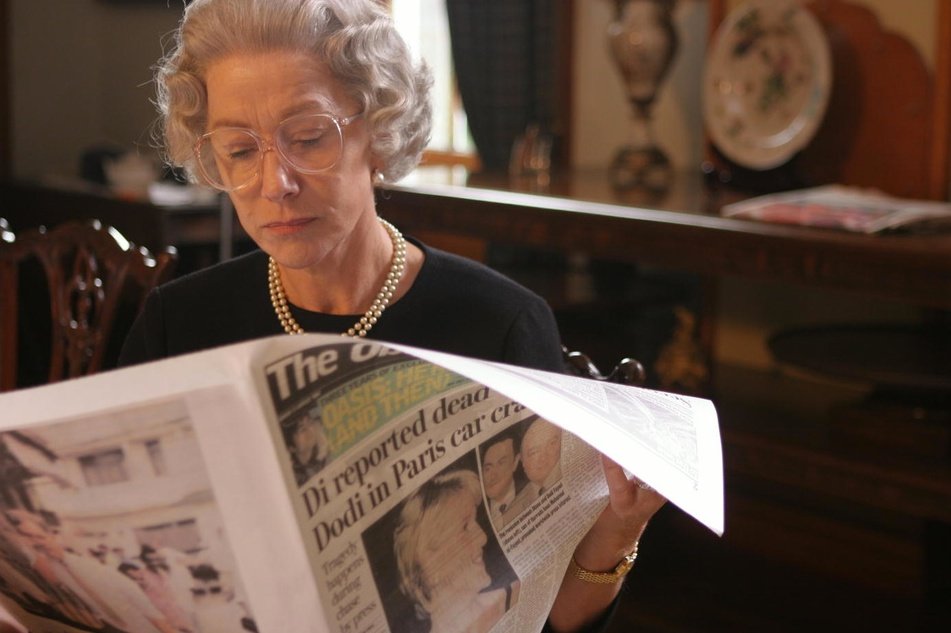
Helen Mirren as an elder Elizabeth in The Queen (2007)
Indeed, that structuring principle of shaping a drama around two contending individuals who each represent a defining attitude – for Brown and Blair in The Deal, read Elizabeth II and Blair in The Queen, David Frost and Richard Nixon in Frost/Nixon (2009), James Hunt and Niki Lauda in Rush (2013), and so on – has undoubtedly served Morgan well over his subsequent screenwriting career. He’s so good on telling thumbnail-sketch dialogue, and convincingly stitching together his characters’ past travails and present formation, that he generally makes a decent fist of covering the films’ sightly diagrammatic construction.
Much less persuasive are the stylistic outliers, including the slightly bonkers Hereafter in 2010 (which went from uncertain spec script to Clint Eastwood superproduction at a pace with which Morgan himself wasn’t altogether comfortable) and Fernando Meirelles’s 360 (2011), an ill-starred attempt to refit Arthur Schnitzler’s 1897 play La Ronde for a modern era of international air travel.
Above all, though, it’s Morgan’s ability to present us with characters whose flaws and contradictions he refuses to judge which gives his best writing an enduring quality. This is particularly notable in the Channel 4 single drama Longford (2006), in which Jim Broadbent’s controversial peer shows a heroically spiritual attitude of forgiveness towards convicted killer Myra Hindley (a bracingly courageous Samantha Morton), yet at the same time reveals a profound self-delusion in his inability to register the fact of her appalling deeds.
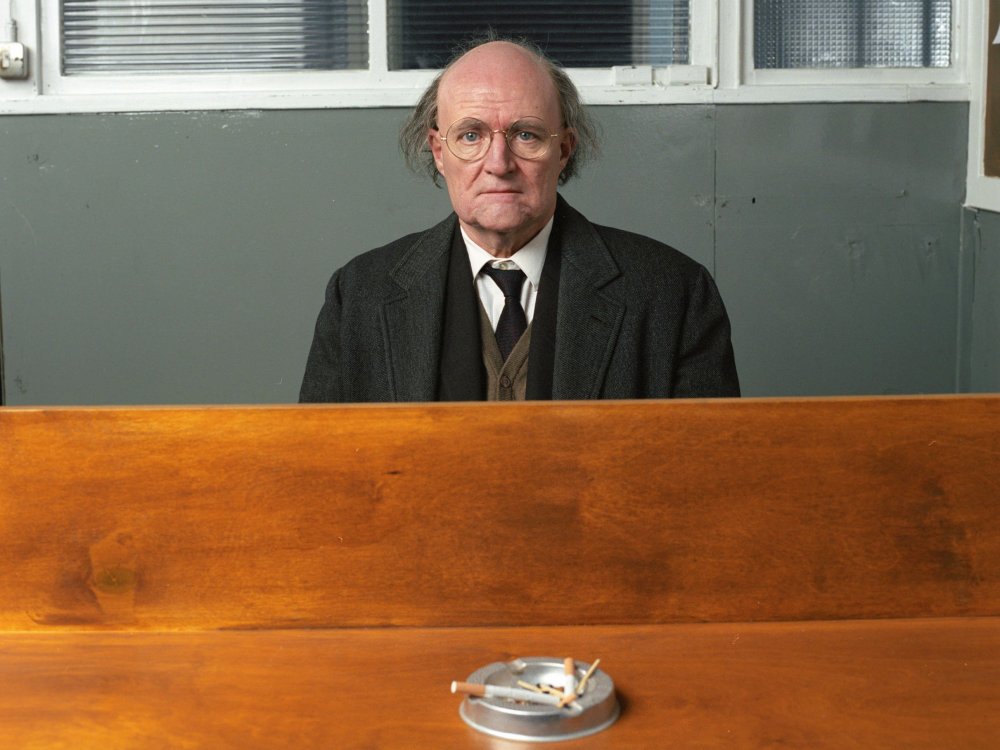
Jim Broadbent in Longford (2006)
With The Crown, however, the chance to work within a more expansive story world rather than get everything done and dusted in a feature film’s running time effectively allows the human insight he brings to his work even fuller scope to flourish, thus providing the novelistic dimension viewers absolutely relish about the longform medium. There’s room here to let the characters develop over time, for instance, and a principal pleasure is seeing Claire Foy’s Elizabeth, mousy and daunted to begin with, show an underlying steel once she begins to gain confidence in her role.
Having established the central dynamic of duty versus desire, the series’ wider canvas also offers space for supporting characters to have their moment too, with former Doctor Who Matt Smith’s Duke of Edinburgh a surprisingly astute moderniser when he’s not drinking to forget his emasculated role within the royal household.
The overall form too is flexible enough to deal with sidetracks and variations, as Morgan relishes the opportunity to unleash unexpected flashbacks at the start of sundry episodes to enrich the overall sense of a historical through-line, yet also proves confident enough to devote much of one episode to the political ramifications of London’s Great Smog of 1952, and another – perhaps even more disarmingly – to modernist painter Graham Sutherland’s controversial portrait of Churchill.
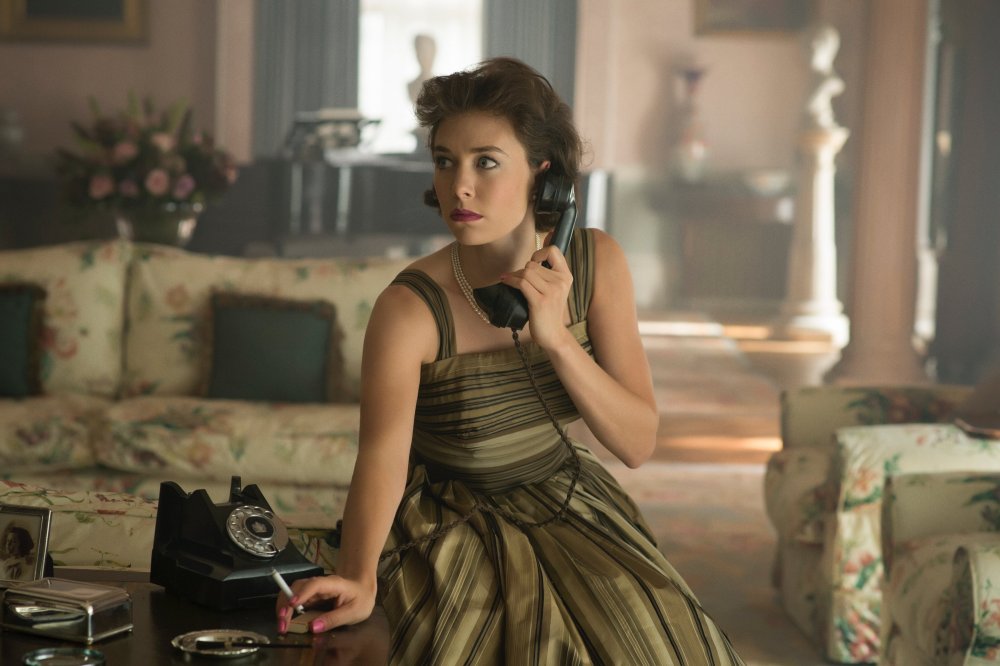
Vanessa Kirby as Princess Margaret
“There’s one or two of them I’m reasonably happy with,” is Morgan’s own cagey assessment at this stage, while also damping down talk of a purported six-season trajectory by suggesting the need to step back and reflect before proceeding further. What’s surprised him most, though, is how it’s now likely to play with British audiences, given the upheavals in current events between writing and transmitting the first series. “Because it’s about the British constitution and our political leaders, and how they combine in the way the country’s constructed, it can’t help but have a whole new resonance in the period of Brexit, which couldn’t have been farther from my mind when I set out on this journey.
“What was even more striking was polishing up the scripts dealing with the Suez Crisis at the time of the Brexit vote, and being struck by the similarities of a country mortgaging its international respect as a stable democracy. In the light of our current betrayal by a whole political class, and, for me, a failure of the democratic process, I found myself looking favourably on the continuity provided by someone like the Queen, and thanking God that she wasn’t actually elected. And, of course, I’m actually pretty disgusted by my own political class that I’m reduced to thinking like that.”
-
The Digital Edition and Archive quick link
Log in here to your digital edition and archive subscription, take a look at the packages on offer and buy a subscription.




